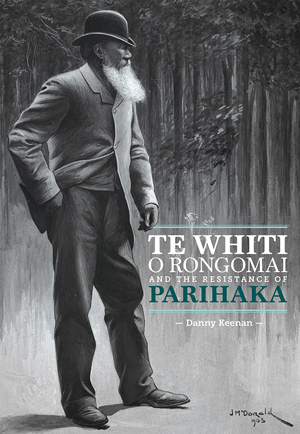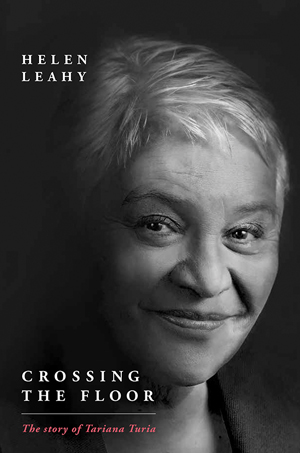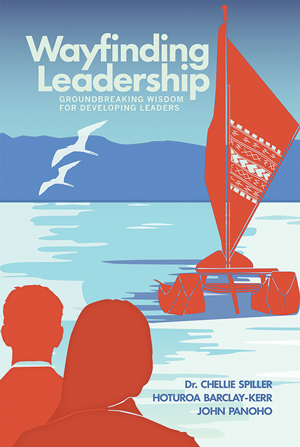ReviewsBooks
Apr 3, 2016

Te Whiti o Rongomai and the Resistance of Parihaka
Nā Danny Keenan
Huia Publishers
RRP: $45.00
Review nā Gerry Te Kapa Coates
 It is very fitting that this review appears in TE KARAKA, because of the connection between Te Whiti and his followers, and their enforced presence in our rohe. It’s some time since I’d read Dick Scott’s Ask That Mountain, so Danny Keenan’s book is a welcome refresher. It is a readable, inspiring, but ultimately sad tale about power and injustice.
It is very fitting that this review appears in TE KARAKA, because of the connection between Te Whiti and his followers, and their enforced presence in our rohe. It’s some time since I’d read Dick Scott’s Ask That Mountain, so Danny Keenan’s book is a welcome refresher. It is a readable, inspiring, but ultimately sad tale about power and injustice.
Taranaki Māori were decimated by Waikato tribes in the musket wars from 1832, with subsequent large migrations south to safety. Their lands were made vulnerable to dubious purchases by Governors FitzRoy, Gore Brown, and then Grey. It was in this precarious environment that Te Whiti grew up, becoming a Christian under the care of a Lutheran pastor, Reverend Riemenschneider, at Warea southwest of New Plymouth. Te Whiti’s village was shelled by HMS Niger in the first year of the Waitara war – which had been a surprise move by the Government – and as a Kīngitanga supporter, he moved further south to Parihaka in the early 1860s to further his growing opposition to Pākehā encroachment in Taranaki. A 25 foot pou was erected just north of New Plymouth, which was a southern boundary for land sales to Pākehā.
Te Whiti’s belief in the principles of peace and goodwill kept him from the excesses of the Pai Mārire movement, which had only encouraged the introduction of more land confiscation and extinguishment of Māori customary titles by the Government. He moved with Tohu Kākahi – a relationship compared with Moses (Tohu, the older visionary) and Aaron (Te Whiti, the skilled orator) – to join his younger brother Taikomako at Parihaka, deep in the coastal forest due west of Taranaki maunga.
Te Whiti never swerved from his gospel of peace and non-resistance, a stance also supported by the Kīngitanga. After the renowned warrior Tītokowaru’s two-year spate of resistance ended with his going into refuge inland of Waitara in 1869, many of his followers moved to Parihaka, but only on the condition they committed no more acts of violence. Open conflict finally ceased in 1872, but not the simmering discontent over customary titles and the continuing acquisition of land. Te Whiti was blamed for coastal Māori being unwilling to participate in public works. By May 1878 the Government decided to “market” the confiscated Waimate Plains (northwest of Hāwera) and send in surveyors, and Māori, already confused over whether land confiscations had been abandoned, were asked “not to interfere”.
Te Whiti asserted Māori rights to the land by ploughing them, and 90 ploughmen were arrested and put into custody in June 1879. This, coupled with more arrests and an Act validating the Government’s actions, was a recipe for escalation. The Māori prisoners were sent to Wellington for a trial that was never held, and then sentenced to hard labour and shipped to Te Waipounamu – Dunedin and Hokitika. More followed. Some were released in late September 1880, but when Parihaka was invaded and occupied on 5 November 1881, more prisoners were taken, including Te Whiti and Tohu. Fortunately, representatives of the press were present in Parihaka to witness the injustices first hand. Te Whiti and Tohu were incarcerated in the New Plymouth gaol and tried, and then sent to Christchurch and detained without trial in Addington Prison.
In July 1886, further protests resulted in arrests including Te Whiti, who was again gaoled for three months. A Royal Commission was finally set up in 1891 to look into Māori land alienation to Pākehā. Their report, while admitting the laws were “imperfect and cumbrous”, stopped short of returning land to Māori, instead suggesting a Native Land Board be set up with full powers to act as owner to give due regard to the welfare and reasonable wishes of Māori. It was in 1903 that Te Whiti made his famous quote to historian William Baucke to “Ask that mountain; Taranaki saw it all.”
In 1987, a special one-ton rock named Rongo was placed near the Shore Street caves in Dunedin as a memorial, and to strengthen the kinship of old between Ngāi Tahu/Ngāti Māmoe and their northern cousins, forged during the troubles of last century.
Danny Keenan’s book is well illustrated with present-day images of Parihaka, and a splendid 1903 cover image of Te Whiti by the artist James McDonald (1863–1935). The book starts slowly with whakapapa, but gathers momentum. There are small issues regarding the index and sufficient mentions of dates to allow the reader to get a sense of progress, but this is a welcome addition to the canon of work on our greatest peaceful warrior, who can hold his mana with the likes of Gandhi.
 Gerry Te Kapa Coates (Ngāi Tahu, Waihao) was born in Ōāmaru, and is an author of poetry – a collection of poems and short stories called The View From Up There (2011) – and widely varied non-fiction. He is a consultant working on hearings as a commissioner and Māori advisory work.
Gerry Te Kapa Coates (Ngāi Tahu, Waihao) was born in Ōāmaru, and is an author of poetry – a collection of poems and short stories called The View From Up There (2011) – and widely varied non-fiction. He is a consultant working on hearings as a commissioner and Māori advisory work.
Crossing the Floor: The Story of Tariana Turia
Nā Helen Leahy
Huia Publishers
RRP: Softback $45.00
Review nā Mark Revington
 As someone on social media said, what a taonga this book is, full of voices talking about the founder of the Māori Party. Above all it is the story of Tariana Turia, as the cover says; written by long-time confidant Helen Leahy, now chief executive of Te Pūtahitanga, the partnership between the nine iwi of Te Waipounamu: Ngāi Tahu, Ngāti Apa, Ngāti Tama, Ngāti Kuia, Ngāti Koata, Te Āti Awa, Ngāti Toa Rangatira, Rangitāne, and Ngāti Rārua.
As someone on social media said, what a taonga this book is, full of voices talking about the founder of the Māori Party. Above all it is the story of Tariana Turia, as the cover says; written by long-time confidant Helen Leahy, now chief executive of Te Pūtahitanga, the partnership between the nine iwi of Te Waipounamu: Ngāi Tahu, Ngāti Apa, Ngāti Tama, Ngāti Kuia, Ngāti Koata, Te Āti Awa, Ngāti Toa Rangatira, Rangitāne, and Ngāti Rārua.
It is hard to believe now that Parliament was not a part of Tariana Turia’s life plan. She entered Parliament in the 1995 election, but it was the hīkoi on the eve of the first reading of the Foreshore and Seabed Bill in 2004 that shaped her impact on politics. The energy created by that hīkoi led to the formation of the Māori Party when Tariana Turia, until then a Labour MP, crossed the floor. She was sworn in as the Māori Party’s first MP, later joined by Pita Sharples, Te Ururoa Flavell, and Hone Harawira, among others. She would go on to be a calm, dignified voice in Parliament among the jostling and shouting that so often characterises politics in this country.
She may be best remembered for her role in setting up Whānau Ora, which reflects her determination to improve the lot of whānau.
But what really makes the book special is the multitude of voices that inhabit its pages. As the author makes clear, her journey in writing the book was “one of capturing stories”, and that left her with a challenge in distinguishing between those voices, and those of the author and her subject.
Helen Leahy has succeeded, and while the biography is packed full of detail, it is the plethora of voices and the implacable determination of its subject that stay in the mind long after the story finishes. Of course, the story of Tariana Turia hasn’t finished.
Tariana reckons her determination to protect her people and the land can be traced back to 1975, when Dame Whina Cooper led land marchers through Te Ika a Māui. She helped feed the marchers at Rātana Pā, and says the experience of that march left her restless, with an unease that lingered long after the marchers left. I suspect her legacy will be similar.
 Mark Revington is a Pou Tokomārama in the Tribal Economies team at Te Rūnanga o Ngāi Tahu. He is a former editor of TE KARAKA.
Mark Revington is a Pou Tokomārama in the Tribal Economies team at Te Rūnanga o Ngāi Tahu. He is a former editor of TE KARAKA.
Wayfinding Leadership: Groundbreaking Wisdom for Developing Leaders
Nā Chellie Spiller, Hoturoa Barclay-Kerr, John Panoho
Huia Publishers
RRP: $45.00
Review nā Dr Eruera Tarena
 How to lead when you can’t see where you are going…
How to lead when you can’t see where you are going…
Polynesian navigators were the greatest explorers of their time. They were the astronauts of their age. In Wayfinding Leadership, three Māori leaders – an academic, a navigator, and a businessman – have drawn from our ancient navigational knowledge to create a fresh model of personal, professional, and organisational leadership. This is not a book about sailing, neither is it an academic book about management theory; rather it soulfully presents wayfinding as a metaphor for helping leaders find their way in an increasingly complex and fast-changing world.
Navigators talk of “seeing the island”. They form a mental map leading to their destination and then open themselves to their reality, using sun, star, wind, and swell to guide their journey. Wayfinding is a dynamic practice, as the journey is never linear. Like life, things change. The wayfinder is a leader who is in a constant state of awareness, spotting patterns, noting shifts, and adjusting course.
Western approaches to corporate leadership favour rational absolutes and logical thinking, but our communities face complex challenges and an unpredictable future. This book raises the question of our approach to growing leaders. Are we nurturing the types of leadership to help our people safely navigate future change, or do we also mistakenly label risk managers and data analysts as leaders?
Management books can make for hard reading. This book spices things up with rich personal accounts from navigators. These stories make the book accessible and inspiring, giving real world examples that we can connect to personally and culturally.
More than just homage to ancient knowledge, Wayfinding Leadership presents an alternative model of leadership for our people to ride out waves of change, and grow skilled navigators to take us to new horizons.
It is presented with intellectual grunt, but is never inaccessible. Most importantly, it draws upon the greatest strain of leadership in our DNA, reminding us of the greatness from which we descend, and encouraging us to once again trust in ourselves to find our own way.
The gift of the wayfinder’s journey is not arrival at a destination; it is who we become along the way as we fulfill our potential.
 Dr Eruera Tarena (Ngāi Tahu – Ngāī Tūāhuriri, Ngāti Porou, Te Whānau-a-Apanui). In 2016, Eruera Tarena hopes to spend less time reading management books and more time sailing waka.
Dr Eruera Tarena (Ngāi Tahu – Ngāī Tūāhuriri, Ngāti Porou, Te Whānau-a-Apanui). In 2016, Eruera Tarena hopes to spend less time reading management books and more time sailing waka.
Remembering Christchurch: Voices from decades past
Nā Alison Parr
Penguin Books
RRP: $45.00
Review nā Huia Reriti
 This book is written by two oral historians interviewing 19 elderly interviewees who recount their life-stories of when they were young in the 1950s.
This book is written by two oral historians interviewing 19 elderly interviewees who recount their life-stories of when they were young in the 1950s.
I was thinking that the title of this book may suggest it could be grim reading; the content is essentially about memory and loss experienced by each elder.
However, the stories retold by each one, for me at least, are simply absorbing narratives. They’ve each remembered well, with similar emotions. Each story transports the reader to a yesterday dream world – fabulous.
I couldn’t help but wonder how our tāua and pōua must have lived, or should I say, “survived” within a tough new world. How the hell did they bring up all those kids? Also, those “long-drops” give me the shivers!
I’m not that old but I do recall some of the detail of Christchurch past, which was kinda cool thinking back. The United Service Hotel was posh in the 50s? Certainly wasn’t in my day!
There are two older Māori featured in the book too – nice touch – I won’t let on who!
The text is big font, easy-read, rhythmic, and emotive. Perfect.
I’ve always enjoyed books where you can begin anywhere within the text and not miss nuance. If you’re the same, then this book is for you.
The text had such a personal weave that it allowed me to feel or imagine that I was there, transported to that place or inside that house.
You all know these houses – some of my aunties still live in them!
And finally, when I explain to my whānau about this book that I have just read, they’ve each asked where they can purchase or whether they can borrow it as it simply has that much appeal. I give it an excellent 8 out of 10.
 Huia Reriti (Ngāi Tahu) is a partner in Modern Architecture Partners in Christchurch.
Huia Reriti (Ngāi Tahu) is a partner in Modern Architecture Partners in Christchurch.
Breaking Connections
Nā Albert Wendt
Huia Publishers
RRP: $35.00
Review nā Teoti Jardine
 The rhythm of waves reaching the shore carried me through Albert Wendt’s novel Breaking Connections.
The rhythm of waves reaching the shore carried me through Albert Wendt’s novel Breaking Connections.
Friendships forged at Primary School became “The Tribe”, their tales tantalisingly unfolding through Daniel, their story teller. He reflects on their individual journeys, from their very first meeting, through high school, university, and out into the world.
He holds the characters up to the light, allowing us to see the ties that bound them. Even when they disagreed, were compromised, or separated from each other, they remained connected.
Albert Wendt tells this story couched in the Samoan and Māori worlds. Their protocols, explicit or implicit, are always present, honoured, and immersed in the aroha that is the ocean where “The Tribe” sinks, swims, plays, and matures.
He makes references to situations that drew me into a place of asking how, when, and why, then lets me know through his beautiful manner of storytelling, allowing me to be present and embrace each individual as they experience their various joys and heartbreaks.
He invited me to reflect on my own connections, showing me how even through the breaking up, the letting go of those people I have loved, they are with me still. They are my tribe.
As the waves break upon the shore, the ocean is never diminished, nor each wave separated from its source.
Thank you very much Albert Wendt, for reminding me of this.
 Teoti Jardine is of Māori, Irish and Scottish descent. His tribal affiliations are: Waitaha, Kāti Māmoe, Kāi Tahu. He is a member of the Canterbury Poets Collective Committee and the Kāi Tahu Writers Whānau.
Teoti Jardine is of Māori, Irish and Scottish descent. His tribal affiliations are: Waitaha, Kāti Māmoe, Kāi Tahu. He is a member of the Canterbury Poets Collective Committee and the Kāi Tahu Writers Whānau.
Opinions expressed in REVIEWS are those of the writers and are not necessarily endorsed by Te Rūnanga o Ngāi Tahu.